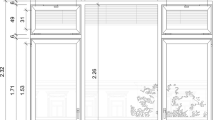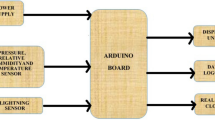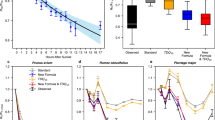Abstract
FOR many ecological and phonological purposes, records of maximum, minimum and mean temperatures are required, while in physiological studies of metabolic-rates only the last-named may be necessary; but in both cases measurements must frequently be made in very confined spaces. Apart from expensive thermocouple amplifiers with their considerable power demands, existing temperature-recording methods are unsuitable for two reasons: the normal thermograph has a sensitive element which is much too large in relation to the spaces of which the temperature is to be measured, quite apart from measuring temperature gradients within such spaces; and, secondly, the process of 'integrating' the curve of a thermograph chart is time-consuming and often inaccurate. My ecological studies require a knowledge of the mean temperature at which soil animals are living, so that laboratory measurements of metabolic-rate may be extended to field conditions; temperatures have therefore to be measured at a number of depths in the soil. At the same time it is desirable for this particular purpose that the values obtained should be related-to the temperature not on a linear scale, but in approximately the same way as metabolic-rates are related to temperature, namely, logarithmically, so that a 10°C. increase in temperature has double the effect on the final value, while a 10°C. decrease in temperature has half the effect of maintaining the apparatus at the mean temperature itself. It should be noted that this second characteristic is not an essential feature of the device. The apparatus used incorporates Type F thermistors (manufactured and kindly supplied by Standard Telephones and Cables, Ltd.), a 2-volt accumulator and a silver voltameter connected as shown in the diagram. Mean temperature is calculated from the gain in weight of the voltameter cathode. The curve relating the current flowing through a thermistor to temperature is governed by the formula where E is applied E.M.F., I is current, t is absolute temperature, and α and β are constants. But the slope of the curve produced when the logarithm of the current is plotted as abscissa against temperature as ordinate is steeper than that relating metabolic-rate to temperature. However, by feeding a voltage proportional to this current to a second thermistor maintained at the same temperature as the first, the resulting current through the second thermistor alone varies more with temperature. By making the resistance R (see diagram) equal to the working mean thermistor resistance, a less steep curve than the metabolic-rate one can be obtained, while, by suitably adjusting this resistance, the combination can be made to conform to the same law as that which governs metabolic-rate. (Similarly, by suitable combinations of thermistors and resistors, almost any logarithmic law can be simulated.) In practice, an apparatus containing three sets of two probes is used with provision for testing for open circuits and leaks.
This is a preview of subscription content, access via your institution
Access options
Subscribe to this journal
Receive 51 print issues and online access
$199.00 per year
only $3.90 per issue
Buy this article
- Purchase on Springer Link
- Instant access to full article PDF
Prices may be subject to local taxes which are calculated during checkout
Similar content being viewed by others
Author information
Authors and Affiliations
Rights and permissions
About this article
Cite this article
MACRADYEN, A. A Simple Device for Recording Mean Temperatures in Confined Spaces. Nature 164, 965–966 (1949). https://doi.org/10.1038/164965b0
Issue Date:
DOI: https://doi.org/10.1038/164965b0
Comments
By submitting a comment you agree to abide by our Terms and Community Guidelines. If you find something abusive or that does not comply with our terms or guidelines please flag it as inappropriate.



